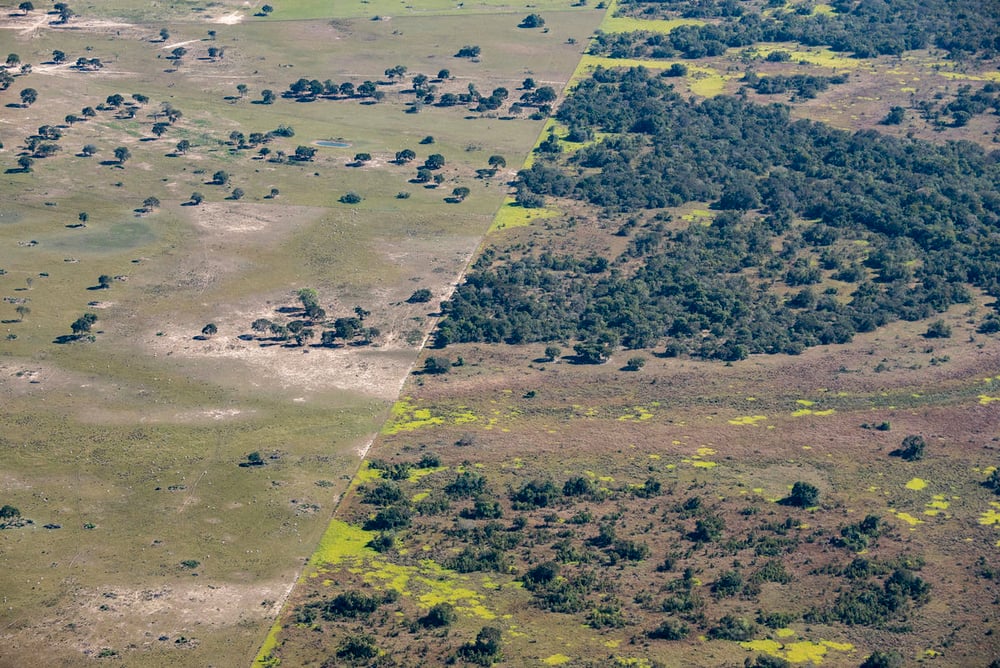Forests are home to more than half of all species found on land, a rich variety of life that keeps many of our most vital natural systems running – from keeping our climate stable by absorbing carbon dioxide and releasing oxygen, to regulating our water supply and improving its quality.
Over one billion people live in and around forests and depend on them for fuel, food and medicines. And all of us use wood in our daily lives, from the chair we sit on to the paper we use.
Unfortunately, human impacts have already led to the loss of around 40% of the world’s forests. And we’re losing forests at a rate of 10 million hectares per year. Halting deforestation, protecting and sustainably managing forests, and restoring forests have never been more urgent.
Forests are coming under more pressure than ever as demand for food and fuel grows.
Every year, around 10 million hectares of forests are destroyed, making way for activities like cattle pasture, palm oil plantations, soy fields or roads. Most of this is happening in tropical regions, where there is a particularly rich variety of life.
Even larger areas are suffering from degradation – where the forest remains, but its richness and health is in decline. Threats include illegal and unsustainable logging, overharvesting of wood for fuel and charcoal, small-scale farming, hunting, forest fires, and pests and diseases.
All this threatens the survival of countless species, fuels climate change, jeopardizes people’s livelihoods and undermines the vital services that forests provide.
Stay updated with our latest blogs and stories here.


We want to see a world where forests are properly valued for the many benefits they provide for people, economies and nature. And we know it’s possible.
With better protection, forests can continue to provide a welcome home for wildlife and provide resources for indigenous peoples and local communities. Globally, they can keep delivering essential services such as climate stability and clean water. With better management, we can meet the growing demand for wood products without damaging the local environment. And with better planning, we can produce enough food for growing populations without having to convert forests to farmland.
We can even go further, by replanting and restoring forests that have been destroyed or degraded. This can help address climate change, extend and reconnect wildlife habitats, and reduce problems like flooding and erosion.
"The value of forests cannot be underestimated. From carbon storage to cultural diversity, forests impact us in more ways than we can imagine. "
Fran Price, Forest Practice Lead
Subscribe now to embark on a 5-week journey that will empower you with simple yet impactful tips and lifestyle changes you can make to help protect our forests! Every action adds up, no matter where you are - and you too can go from Zero to Forest Hero today!
Forests have been at the heart of WWF’s work for half a century - we’ve supported the creation of protected areas, helped move the forest sector towards sustainability and transparency; and we’re working across the world to halt deforestation, help restore forests and put deforestation-free commitments into action.
We're collaborating with communities to design locally led solutions and supporting them to take control of their forest resources.
We're working with multinational businesses to ensure their supply chains are forest-friendly and that companies take action to meet their zero-deforestation commitments.
We're influencing governments' climate and development plans, and encouraging investment in restoring forests
WWF works across the world to halt deforestation and forest degradation, protect and sustainably manage forests and restore forest landscapes. Leading the team – called the WWF Forests Practice – is Fran Raymond Price, who has spent her career working to protect forests and improve forestry around the globe.
Fran Raymond Price, Forest Practice Leader
By 2030, we’re working to end deforestation, protect and improve the management of the world’s forests, and help restore forest landscapes across the world.

© 2017 WWF - World Wide Fund For Nature© 1986 Panda Symbol WWF – World Wide Fund For Nature (formerly World Wildlife Fund)® “WWF” is a WWF Registered Trademark Creative Commons license.